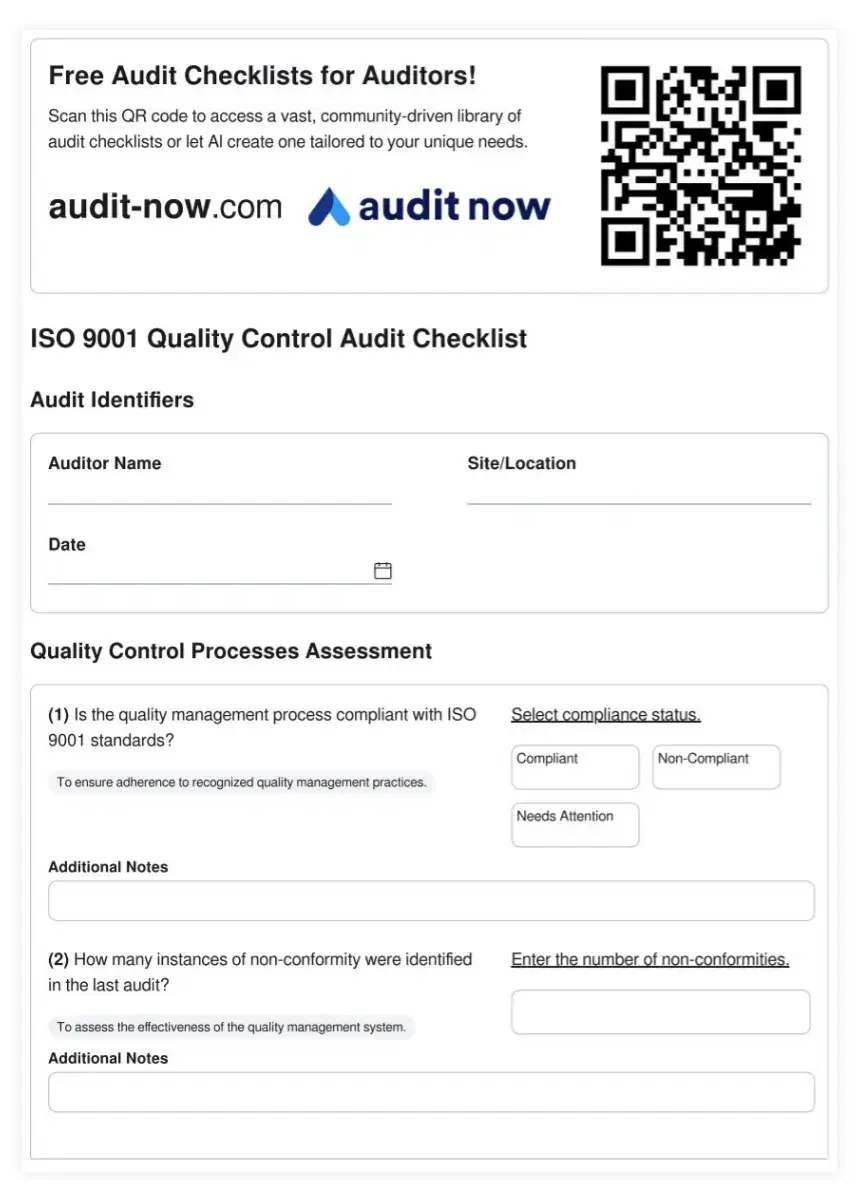Good Laboratory Practice (GLP): Ensuring Quality and Integrity in Research

Featured Checklist

GLP Test Article Handling and Storage Audit Checklist
Proper handling and storage of test articles is critical for maintaining the integrity of pharmaceutical research conducted under Good Laboratory Practice (GLP) standards. This GLP Test Article Handling and Storage Audit Checklist is designed to help quality assurance personnel, study directors, and laboratory managers evaluate and improve processes related to the receipt, storage, handling, and disposal of test articles. By implementing this checklist, pharmaceutical organizations can ensure compliance with GLP regulations, maintain the quality and stability of test articles, and enhance the overall reliability of their research studies.
Understanding Good Laboratory Practice (GLP)
Good Laboratory Practice (GLP) is a quality system of management controls for research laboratories to ensure the consistency, reliability, reproducibility, and integrity of non-clinical safety tests. These principles are essential for studies related to the safety of products regulated by government agencies, including pharmaceuticals, medical devices, food additives, and pesticides.
GLP standards were developed to address concerns about the quality and integrity of laboratory data submitted to regulatory authorities. By implementing GLP, organizations can ensure that their research data is traceable, reliable, and of high quality, which is crucial for regulatory submissions and decision-making processes.
Key Principles of Good Laboratory Practice
GLP encompasses several fundamental principles that guide laboratory operations and management:
- Organization and Personnel: Clearly defined roles and responsibilities for all staff involved in studies
- Quality Assurance Program: Independent monitoring of research activities to ensure compliance with GLP principles
- Facilities: Suitable size, design, and location of testing facilities
- Equipment: Properly maintained and calibrated instruments and apparatus
- Test and Reference Items: Proper characterization, handling, and storage of test materials
- Standard Operating Procedures (SOPs): Documented procedures for all aspects of laboratory operations
- Study Performance: Adherence to approved study plans and protocols
- Reporting of Results: Complete, accurate, and timely reporting of study findings
- Storage and Retention of Records: Proper archiving and retrieval of study data and specimens
Benefits of Implementing GLP Standards
Adopting GLP standards offers numerous advantages for research organizations and the scientific community as a whole. These benefits include enhanced data quality and reliability, improved reproducibility of research findings, increased credibility with regulatory authorities, and better protection of human and animal subjects in research studies. Furthermore, GLP implementation can lead to more efficient laboratory operations, reduced errors and rework, and ultimately, faster time-to-market for new products.
Core Audit Requirements and Importance of Checklists
Auditing plays a crucial role in ensuring compliance with GLP standards. Core audit requirements typically focus on assessing the laboratory's adherence to GLP principles, including organization and personnel management, facility and equipment maintenance, study conduct, and data management practices. Checklists are invaluable tools in the auditing process, providing a systematic approach to evaluating GLP compliance.
The importance of checklists in GLP audits cannot be overstated. They serve as comprehensive guides, ensuring that auditors cover all critical aspects of GLP requirements. Checklists help maintain consistency across different audits and auditors, reduce the likelihood of overlooking important elements, and provide a clear record of the audit process. Moreover, they can be tailored to specific laboratory settings or study types, allowing for more focused and efficient audits.
To streamline the audit process and ensure thorough coverage of GLP requirements, consider using AI-powered checklist generation tools. These advanced solutions can create customized checklists based on specific GLP guidelines and laboratory contexts, enhancing the effectiveness and efficiency of audits.
Get Started with a Free Trial
Test our platform and discover how our checklists align with the requirements of GLP.
Try now!
Challenges in GLP Implementation and Compliance
While the benefits of GLP are significant, organizations often face challenges in implementing and maintaining compliance with these standards. Common hurdles include the initial cost and resource investment, resistance to change from staff, the complexity of documentation requirements, and the need for ongoing training and education. Additionally, keeping up with evolving regulatory expectations and technological advancements can be demanding for laboratories.
To overcome these challenges, organizations should focus on developing a strong quality culture, investing in staff training and development, leveraging technology for documentation and data management, and maintaining open communication with regulatory authorities. Regular internal audits and mock inspections can also help identify and address compliance gaps proactively.
GLP in the Digital Age: Adapting to New Technologies
As laboratories increasingly adopt digital technologies and automated systems, GLP principles must evolve to address new challenges and opportunities. Key considerations in this digital transformation include:
- Data Integrity: Ensuring the accuracy, completeness, and traceability of electronic records
- Cybersecurity: Protecting sensitive research data from unauthorized access or manipulation
- Validation of Computerized Systems: Demonstrating the reliability and fitness-for-purpose of software used in GLP studies
- Electronic Signatures: Implementing secure and compliant methods for approving electronic documents
Laboratories must stay informed about regulatory guidance on these topics and invest in robust IT infrastructure and training to maintain GLP compliance in the digital era.
Conclusion: The Enduring Importance of GLP
Good Laboratory Practice remains a cornerstone of quality assurance in non-clinical safety research. By adhering to GLP principles, laboratories can ensure the integrity and reliability of their data, build trust with regulatory authorities, and contribute to the development of safe and effective products. As the research landscape continues to evolve, the flexibility and adaptability of GLP standards will be crucial in addressing new challenges and maintaining the highest standards of scientific quality and ethics.
For organizations seeking to enhance their GLP compliance efforts, leveraging expert resources and tools can be invaluable. Explore our comprehensive audit templates and utilize our innovative AI-powered checklist generator to streamline your GLP audit processes and ensure thorough coverage of all critical compliance areas.